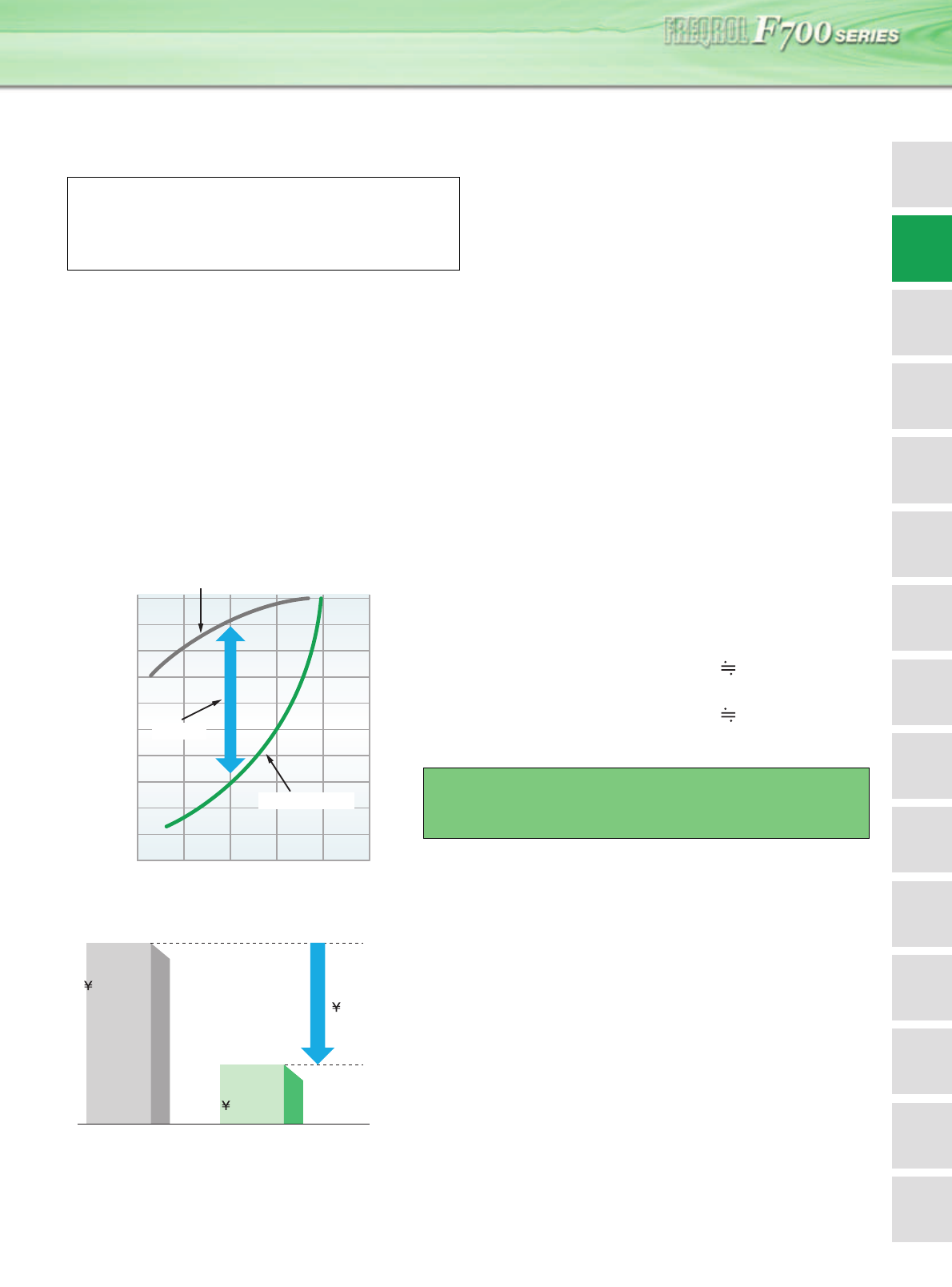
Features
Standard
Specifications
Outline
Dimension
Drawings
Operation
Panel
Protective
Functions
OptionsInstructionsMotorCompatibilityWarrantyInquiry
Peripheral Devices
Why energy
savings?
Terminal Connection
Diagram
Terminal Specification
Explanation
Parameter
List
Explanations
of
Parameters
6
The load torque of a motor-driven machine generally changes depending on speed. On the other hand, motor output is
proportional to the product of load torque and speed as indicated in the following formula, and therefore, necessary motor
output varies with speed.
When this motor is operated by the inverter, the inverter output provides the frequency f appropriate to the motor speed,
and the then output voltage V is determined by a "V/f = constant" pattern in the case of a constant-torque load.
For example, when the motor is operated at middle speed, f, i.e. output voltage V, decreases, and therefore, the inverter
output power V × I reduces if the output current I is constant.
Proportionately, the inverter input current decreases and the power consumption reduces. Namely, when the motor output
reduces, the input power of the inverter also decreases as a matter of course.
The fundamental principle of energy saving by the inverter is to eliminate wasted power consumption by minimizing loss
caused by the other devices and minimizing the motor output as compared to the other system (for example, commercial
power supply operation or secondary resistance control of wound-rotor motor). A maximum energy saving effect is
produced on a fan, pump or like by the variable-torque load characteristic that reduces load torque as speed decreases.
Motor speed control enables substantial energy-saving operation as compared to commercial power supply operation.
Motor output P = T
× N/(9550 × η) [kW]
T : Motor shaft-equivalent load torque [N·m]
N : Motor speed [r/min]
η : Machine efficiency
For example, when a 15kW motor is operated at 60% air volume and
the power charge is 17 yen/kW·h, the power charge as much as below
can be saved in a year.
(1)Damper control
15kW×0.9×17 yen×24h×365days 2.01 million yen
(2)Inverter control
15kW×0.3×17 yen×24h×365days 0.67 million yen
Damper control (discharge side)
Inverter control
Air volume (%)
Power Consumption (%)
Amount of
energy saved
0 40 60 80 100
20
40
60
80
100
Damper control
Inverter
energy-saving
control
15kW
Save
1,340,000
a year
15kW
2,010,000
15kW
670,000
(1) - (2) = energy-saving effect
Approx. 1.34 million yen
Why Can the Inverter Save Energy?
